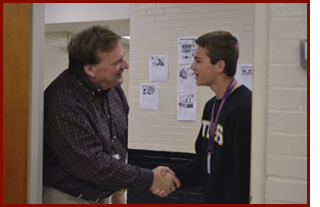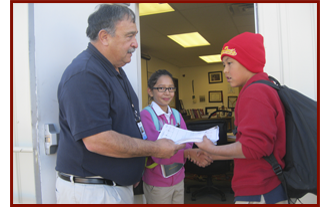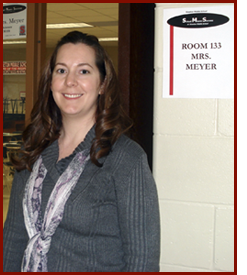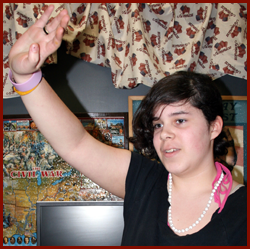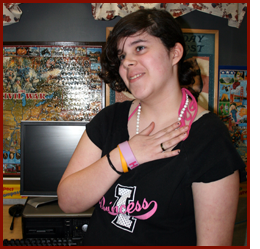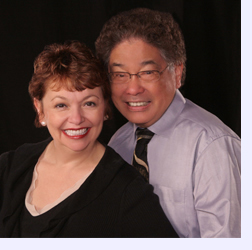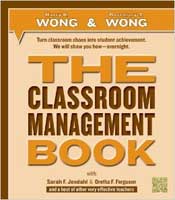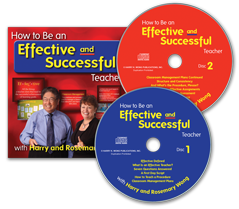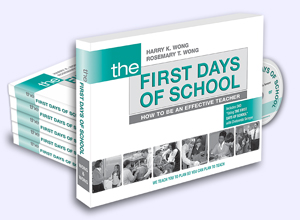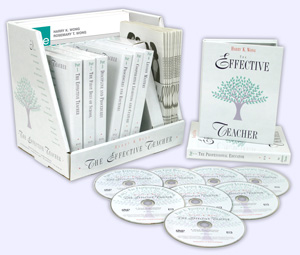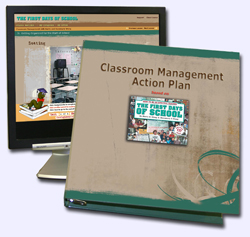|
 |

Special to the Gazette
December 2012/January 2013
Structure Will Motivate Students
How Do I Get Them to Stop? These are our two most frequently asked questions:
Our answer to question one is always the same. We can help you, but we would like more information about you and your classroom so that we can better frame an answer. We ask the person, “Please send us your classroom management plan with the procedures that spell out what it is you want your students to DO.” In over 25 years of asking, we have never received We ask to see a plan that shows if the classroom is structured for success:
To see how a teacher organized her classroom, read pages 213–218, Getting Students to DO We realize that what may be happening in the classroom can be frustrating, but the question is not, “What do I do to get them to stop doing . . . ?” or “What do I do with this kid?” The problem may be You! You’ve gotten into a vicious cycle of Teaching and Disciplining, Teaching and Disciplining, Teaching and Disciplining. You have become full of stress and the students are reacting. No teaching takes place, no learning follows, and everyone’s self-respect is diminished. You do not want to “Do something to a kid” any more than you would like it if someone did something to you. It’s not what a teacher does to a student; it’s what a teacher does to create a plan. Jacob Kounin, the “father” of classroom management, in his research of 1970 found that it is the behavior of the teacher, or what a teacher does, not what the student does, that creates a successful classroom. We can help you create an organized classroom management plan. Many are found in the articles we’ve written since 2000 featuring effective teachers who know how to get students to do what they want students to do and learn what they want them to learn. As far back as September 2000, we wrote “The Problem Is Not Discipline” for Teachers.Net. As recent as August 2010, we wrote about first-year teacher Amanda Brooks, “Effective From the Start,” who explained why she had no discipline problems and “simply taught and enjoyed her students.” Plans are used to tell someone what to do. Pilots have flight plans; wedding coordinators have wedding plans; contractors have building plans; and effective teachers have classroom management plans and lesson plans. A classroom management plan is used to organize the classroom environment for work. A lesson plan is used to organize the lesson for learning and achievement. When there is no classroom management plan, no organization, and no structure, problems will happen in the classroom—but it is not the student’s fault. The #1 problem in a classroom is not discipline; Motivating Students to Learn Our answer to question two is always the same. We ask the person, “Please send us a sample lesson plan that shows what it is you want your students to ‘be motivated to’ learn.” In over 25 years of asking, we have never received Teaching is not “Cover, Test, Grade” repeated with “Cover, Test, Grade.” It’s no wonder students are not motivated. As the research of John Hattie has shown, simply tell the students the lesson’s objectives before the lesson begins and you can increase student achievement by 27 percent. In addition, by providing a formative assessment tool, such as a rubric or scoring guide, to help students see what is needed to make progress, you can see student achievement increase by 37 percent. When students see a goal (objectives) and progress is made (rubric), they are intrinsically motivated to learn. Before each lesson, ask yourself these questions:
In the May 2012 column Students Learn When There Is Trust Trust is a great motivator. When there is trust, students will motivate themselves. This type of motivation is referred to as intrinsic motivation and is the most effective type of motivation to develop in a classroom and in life. The opposite of intrinsic motivation is extrinsic motivation, where someone else motivates a person to something. The motivation is dependent on the actions of others. For instance, a student’s only reason for going to school is to get something from the “Treasure Box” every day. She is only happy when she can come home and show her parent what she got—not what she learned. Effective teachers have a classroom that is structured and organized and CONSISTENT in how the classroom is run. Trust comes from the safeness of consistency. A classroom that is consistent is predictable, reliable, dependable, and stable. In a classroom that is consistent, the students do not ask, “What are we going to do today?” The class atmosphere is calm and focused, because they know what to do. A classroom that is consistent and predictable can run itself—even in the absence of the teacher. We shared this example in October 2011. Each day the most important gift we can give our students is to be consistent and predictable. Many of our students come from homes where chaos and unpredictability may be the norm. Research shows that providing our students an environment that is safe, predictable, and nurturing will increase their achievement. In a poll, parents were asked what they wanted from a school. The #1 request was for a safe school.
We regret that the answer to how to motivate students in not as easy as pushing a help button. Yet, the answer is known and can be easily implemented. To do this Develop a plan and work the plan. Trust Begins At the Classroom Door Each day or each class period, greet the students at the door. Even have a student at the door with you as you greet each student. The research of Alan Allday at the University of Kentucky shows that if students are greeted at the door, it will increase student engagement by 33 percent.
Students young and old like to be acknowledged. Darrell Cluck, on the left, is a middle school teacher in Monroe, Louisiana. He greets his students each period as they enter the classroom. In Jimmy Lara’s classroom in Espanola, New Mexico, a student stands with Jimmy to welcome the students at the start of the day. Welcoming students each day sends a message that they matter. When students feel that they matter, their levels of motivation and achievement are more likely to rise. Schoolwide Consistency Motivates
A preservice teacher made his first official classroom observation in Tammy’s classroom. Tammy welcomed him and encouraged him to monitor students, watch the day’s activities, and help with the lab activities that each class was participating in that day. The following day, Tammy greeted him and asked, “So, what do you think of this whole business of becoming a teacher?” She was not prepared for his response. He calmly replied, “There isn’t the stress involved with teaching like I thought there would be.” Tammy asked him what he was expecting to see in the classroom. “I expected there to be more conflict, argument, and chaos. It’s what I remember when I went to middle school and I expected to see it here. There just weren’t any of those things in your classroom.” Tammy shared with him that she teaches classroom procedures the first week of the school year. She tells the students everything they need to know, right down to the dreaded—what to do if you think you’ll be sick in the middle of class. Nothing is left to chance. She has a plan and a procedure for everything that happens in their classroom. Tammy says, “The students know exactly what to do when they walk into my classroom. There is no chaos, because they KNOW the procedures. There is consistency.” Motivation to Respect Her
With student Amy Amaya demonstrating, Lois explains that the class is to come to attention and be quiet when they see the teacher or a student raise their right hand high in the air. While the hand is in the air the person states clearly in a gentle but firm tone, “Respect me.”
By the end of two weeks, when a hand touches a heart in Lois’s classroom, the class is silent. The class now reminds their classmates of the procedure. When someone is so engaged and doesn’t see or hear the procedure, rest assured there will be a student who chimes in, “Respect her!” Lois said that she was recently in a grocery store and ran into a student she had last year. A tear ran down her face as she saw him put his hand high in the air and lower it over his heart. What a gesture of respect! The Smile That Motivates We recently spoke to a group of 900 teachers in Santa Fe, New Mexico. Verizon was one of the sponsors of the meeting and Curtis Robinson, representing Verizon, delivered greetings from the company and shared this story.
The Power of a Smile So, to all the teachers who ask, “How do I motivate my students?” A smile is all it takes. A smile is the key that unlocks the heart of learning. A smile sets the stage for a caring classroom and kindles the desire to learn. A smile is free and easy to give. But, it must delivered by a nurturing teacher A smile is the beginning of a relationship—a bond. Students, like Curtis Robinson, will recall the many teachers in his life, but those teachers who knew how to teach the subject matter, who organized the classroom so that each day would be a safe, learning community, who demonstrated respect for both the students and the learning process, and who understood and accepted students as the diverse individuals they all were, are the teachers that etched a smile that Curtis will forever carry in his heart. These teachers are the teachers who are the difference in the lives of students. They accomplish their mission smile by smile, one day at a time, one student at a time. Gift your students a smile they will carry with them the rest of their lives.
|
|||||||||||||||
| |||||||||||||||
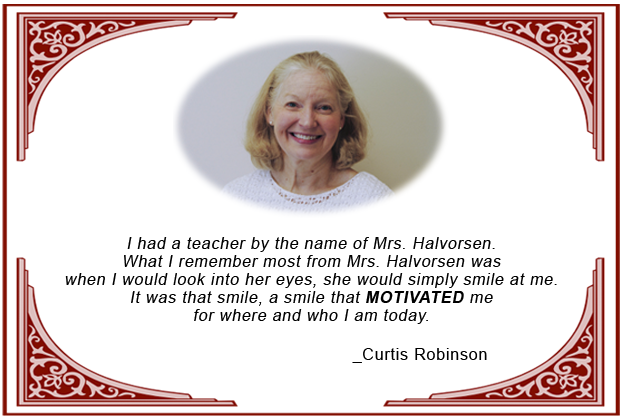
 Safety is not created by chance. It is created with a framework where situations or events are anticipated and then actions are created that produce predictable outcomes. The same framework is created in a classroom with an organized classroom management plan.
Safety is not created by chance. It is created with a framework where situations or events are anticipated and then actions are created that produce predictable outcomes. The same framework is created in a classroom with an organized classroom management plan.